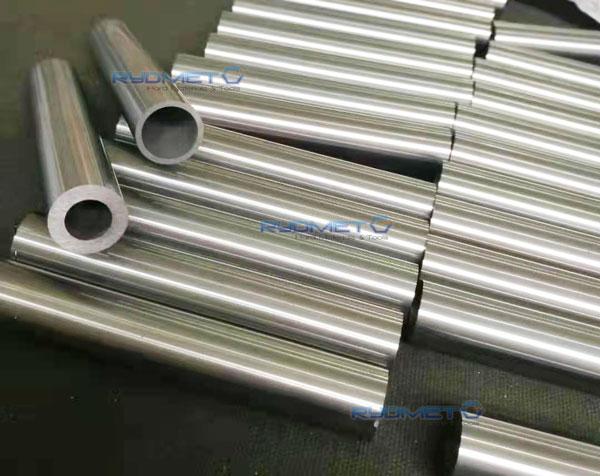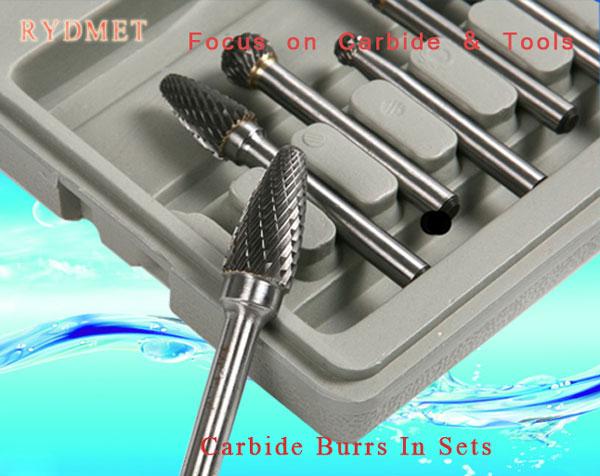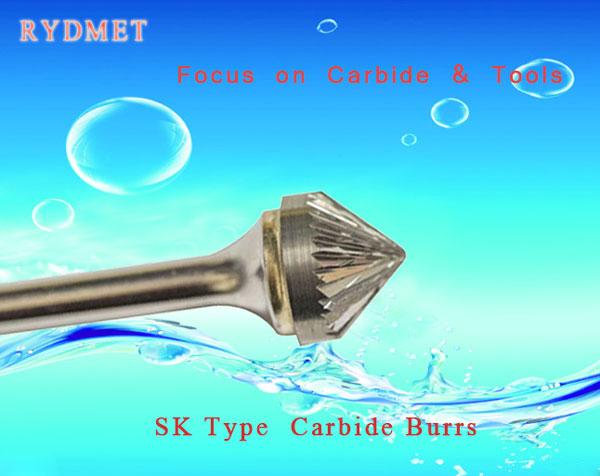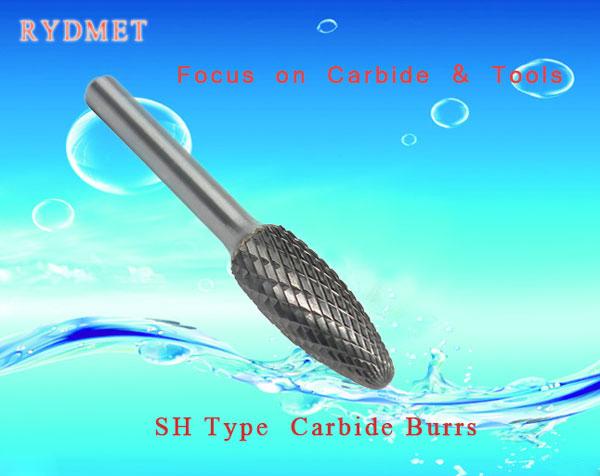- Types of Cemented Carbide--
The Cemented Carbides are a range of composite materials, which consist of
hard carbide particles bonded together by a metallic binder.
The proportion of carbide phase is generally between 70-97% of the total
weight of the composite and its grain size averages between 0.4 and 10 μm.
Tungsten carbide (WC), the hard phase, together with cobalt (Co), the binder
phase, forms the basic Cemented Carbide structure from which other types of
Cemented Carbide have been developed. In addition to the straight tungsten
carbide – cobalt compositions – Cemented Carbide may contain varying proportions
of titanium carbide (TiC), tantalum carbide (TaC) and niobium carbide (NbC).
These carbides are mutually soluble and can also dissolve a high proportion of
tungsten carbide. Also, Cemented Carbides are produced which have the cobalt
binder phase alloyed with, or completely replaced by, other metals such as iron
(Fe), chromium (Cr), nickel (Ni), molybdenum (Mo), or alloys of these
elements.
There are three individual phases which make up Cemented Carbide. In
metallurgical terms, the tungsten carbide phase (WC) is referred to as the
a-phase (alpha), the binder phase (i.e. Co, Ni etc.) as the b-phase (beta), and
any other single or combination of carbide phases (TiC, Ta/NbC etc) as the
g-phase (gamma). Other than for metal cutting applications, there is no
internationally accepted classification of Cemented Carbides.
---Cemented Carbide Grade--
Because Cemented Carbides are mainly made up from WC and Co (i.e. two
phases), although small additions or trace levels of other elements are often
added to optimize properties, the Grades are classified mainly according to
their cobalt content and WC grain size, though some times take into
consideration of the trace elements.
These grades are classified according to their Cobalt content and WC grain
size and are often called the "straight grades". They have the widest range of
strength and toughness of all the Cemented Carbide types and this is in
combination with excellent wear resistance.
The grades with binder content in the range 10-20% by weight and WC-grain
sizes between 1 and 5 μm have high strength and toughness, combined with good
wear resistance.
The grades with binder contents in the range 3-15% and grain sizes below 1 μm
have high hardness and compressive strength, combined with exceptionally high
wear resistance.
While the grades which utilize a range of ultra-fine WC grain sizes (< 0.5
μm). With such fine, uniform grain sizes, a unique combination of hardness, wear
resistance and toughness can be achieved.
Due to the different compositions, the carbide’s differs a lot in the
physical properties among the grades, this just leads to the various application
of Carbide to many industries.
















